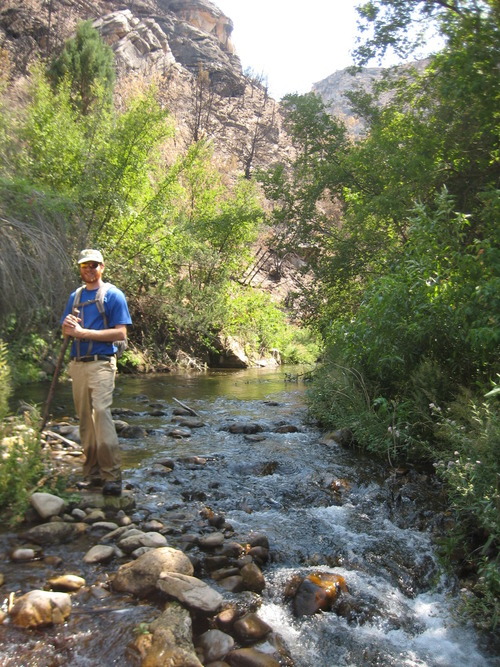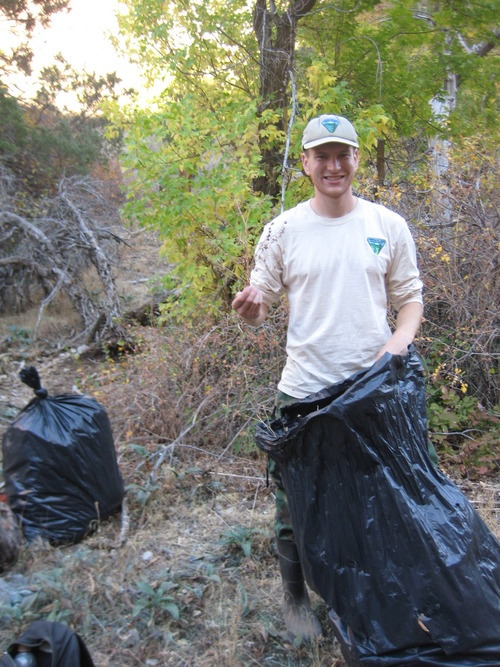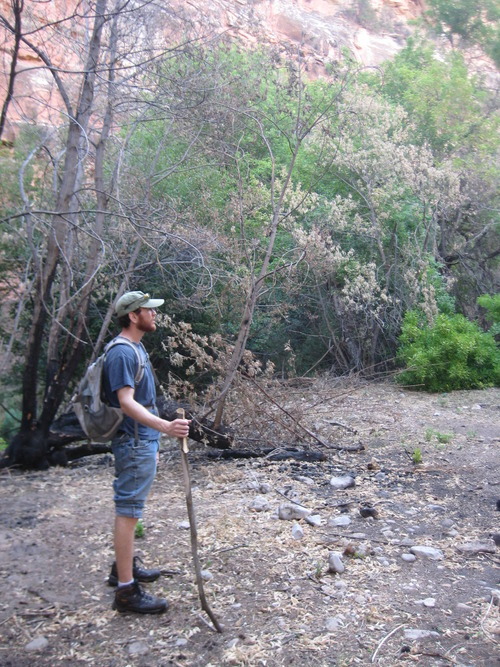So thus ends my 5 months in Wyoming, working with the BLM on weed management and so so so much more. This has been an amazing experience for me and not only has my resume been improved by leaps and bounds, but I have grown tremendously as a person and I am so thrilled for unexpected opportunity. Working with a completely different ecosystem and still seeing the over arching concepts I have learned about applied has been a great learning process for me, as well as trying a slew of new things like fly fishing and home brewing. I would like to thank the BLM and the CBG for giving me this opportunity as well as all the helpful and friendly people in Worland that made my stint there fly right by. As for my reflecting on my experiences, I am going to reuse the article I wrote for a press release because I think it summed everything up nicely. Thanks for everything CBG, BLM field office in Worland, WY, interns, friends, and family.
-Nate T.

When I told my friends and family back home that I was going to Wyoming for five months, most of them responded with a puzzled look and the same question, “Why, what’s in Wyoming?” Being born and raised in New Jersey I really didn’t have a good answer. I knew I would be working on weed management, I knew Yellowstone and Grand Teton national parks are there, and I knew it is the state with the lowest population in the U.S. Other than that, I didn’t know anything about Wyoming. I didn’t know the Bighorn Mountains exist, let alone how beautiful they are. I didn’t know that parts of the Bighorn Basin are practically a desert. I didn’t know anything about sage-grouse, or that there are actually more pronghorn than people in Wyoming. I didn’t even know what the Bureau of Land Management (BLM) is or anything about public lands. I really didn’t know anything about the west, but in the short time I’ve been here, I feel like the Cowboy State has taught me well.
My internship with the BLM is through the Chicago Botanic Garden (CBG). The CBG runs a program called the Conservation and Land Management Internship Program in which it matches prospective interns with different agencies to help people get real world experience working in environmental and biological fields. I was lucky enough to be paired up with the BLM Worland Field Office (WFO), working in weed management. My mentor for the internship is C.J. Grimes, who has not only been a very helpful and informative mentor, but a friend and guide. The people at the WFO have been great and, most of all, patient with all of my questions. Learning what goes into managing public lands was eye opening; even though it isn’t always smooth, all the moving parts find a way to fit together.
The two most significant areas this internship has exposed me to are rangeland management and wildfires. I had no clue about the amount of foresight and thought that goes into rangeland management. It is so much more than just turning the cows out and then moving them after. The land is monitored and calculations are made to determine how much livestock the land can support, when the livestock needs to be moved to ensure the vegetation will be productive enough to support it next year, and to ensure there is enough forage and habitat for wildlife. It is a complex balancing act done on an enormous scale so that people can continue to make a living and habitat and wildlife can thrive at the same time.
Wildfires were also a huge change for me. Rarely are there wildfires in New Jersey and, when they do occur, they are nowhere near the size they are here. I learned that fire management is more than just trying to put a fire out. A lot of the management is done before and after a fire is actually burning. From measuring the amount of moisture in plants to thinning projects, there are many ways to figure out the risk of a potential fire and how to reduce that risk. After a fire is out, a number of monitoring and treatment projects are done to prevent the invasion of weeds. This reduces the risk and severity of future fires and ensures the land will be usable again for grazing and recreation. Fire management, or lack of it, can affect an area for decades after a fire and can be the difference between being left with thousands of acres of cheatgrass or a healthy landscape that has many uses.

While I learned about a lot about the BLM and what it does, my internship focused on weed management. I was able to see a lot of the Bighorn Basin by surveying huge chunks of land for weeds and driving on roads that I had no idea were drivable in a Ford Explorer. I worked on a number of projects using chemical, mechanical and even some biological methods of weed control. I learned what a pain it can be to deal with invasive thistles (literally) and how difficult it is to clip houndstongue seed heads without getting covered in them. I had prior experience with invasive plant management but the sheer scale of things in Wyoming makes it a completely different ballgame.
Dealing with hundreds of acres of cheatgrass or miles of Russian olive stands make management difficult to say the least. While the size of the infestations makes things difficult, the public’s eagerness to participate makes a huge difference. It was encouraging to meet so many people who not only know what invasive plants are and why they need to be managed, but were eager to help and wanted to make a difference. Maybe it’s because more people in Wyoming make a living off the land, maybe it’s the number of hunters and anglers here, or maybe people out west just have more of an appreciation for the outdoors. Whatever the reason, the fact that there is cooperation between private land owners, nonprofits, county weed and pest districts and state and federal governments is not only amazing, but makes me very optimistic that this isn’t a losing fight against invasive species.

Coming out west from the east coast was a bit of a culture shock. There was definitely an adjustment from living in a densely populated area with every amenity within 15 miles, to towns of hundreds and having to travel more than 100 miles to buy things I couldn’t find in the local grocery store. After only a short while in Wyoming, I can see why people love it here. The Bighorn Basin has a rugged beauty all its own. You have to be tough to live in a place where it may only rain five inches each year and I am constantly amazed at the tenacity of the plants and animals that thrive here. The people are no different. Most of the people I have met here can roll up their sleeves and get things done and I hope a bit of that has rubbed off on me. I am excited to keep exploring the country and find my next place to work, but I know my experience in Wyoming will stick with me.
